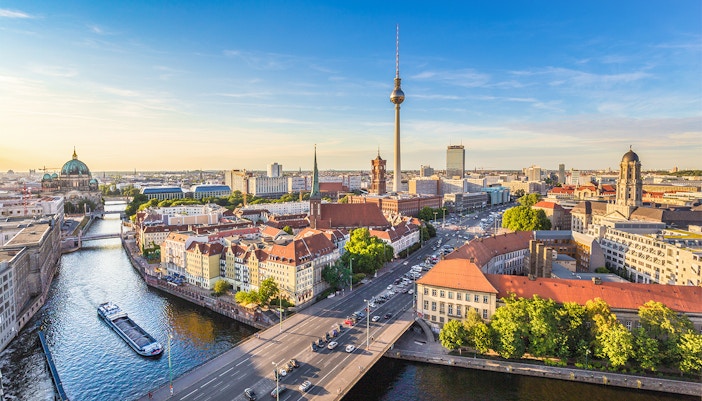- Friedrichstadt Palast
- Tropical Islands
- Illuseum Berlin
- Sachsenhausen Concentration Camp
- DDR Museum
- Panoramapunkt Berlin
- Big Bus Berlin Hop-on Hop-off Tours
- City Sightseeing Berlin Hop-on Hop-off Tours
- Reichstag Tours
- Berlin Wall Museum
- Berlin Welt Balloon
- Berlin Icebar
- Madame Tussauds
- Samurai Museum Berlin
- LEGOLAND Discovery Centre Berlin
- Fotografiska Tickets
Berlin TV Tower History | Timeline, Facts & More
Book your visit to Berlin TV Tower to see its history come to life
Berlin TV Tower history explained

Construction begins (1965)
After finalizing the plans, construction of the Berlin TV Tower began in August 1965. Situated in the historic heart of the city, several older buildings had to be demolished to make way for the tower. The tower’s design came from renowned architect Hermann Henselmann, with many components being imported from West Germany. Once completed, the total cost of construction amounted to a whopping €132 million!
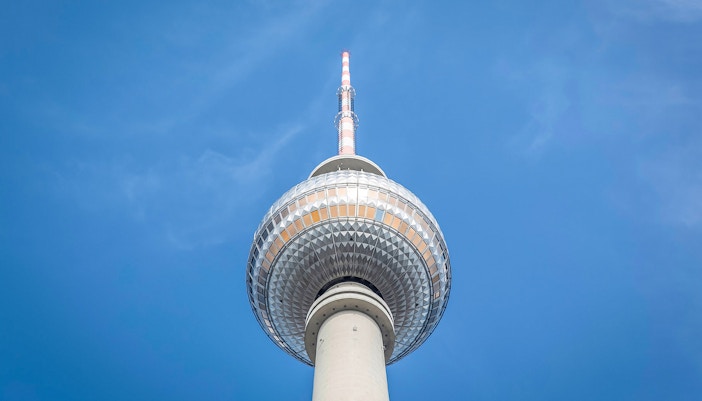
Inauguration of the Berlin TV tower (1969)
The tower was officially inaugurated on 3 October 1969, coinciding with the 20th anniversary of the German Democratic Republic. The ceremony was a celebrated affair, attended by several high-ranking officials. The event also signaled the start of DFF 2, Germany’s second state television channel, cementing the tower’s status in history as a symbol of technological progress.
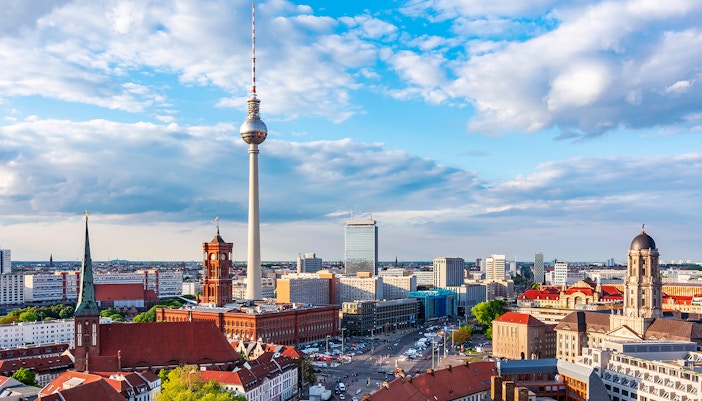
Broadcasting from the tower begins (1970)
Radio transmissions from the Berlin TV Tower started in February 1970 with five FM programs, followed by television broadcasts in April. Its height and central location ensured reliable coverage across Berlin. After reunification in 1990, the tower’s equipment and infrastructure were modernized and expanded to accommodate digital broadcasting technologies.
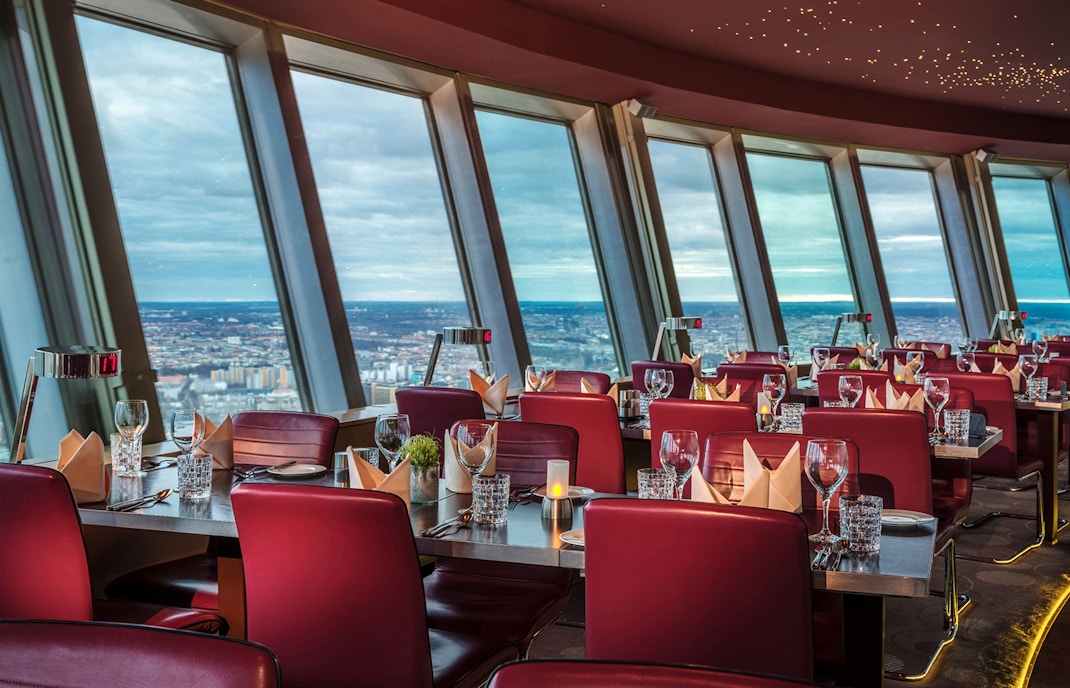
Dining in the sky begins (1972)
In 1972, the Sphere restaurant opened atop the Berlin TV Tower, offering seating for approximately 200 guests and panoramic views of the city. Back then, it was a bustling spot where one could enjoy a unique combination of sightseeing and dining. In 2025, the restaurant was extensively renovated and rebranded as "Sphere by Tim Raue," led by the two-star Michelin chef. The refined interior blends retro elements with modern design, creating an elegant and contemporary atmosphere. Chef Raue's culinary concept focuses on Berlin-Brandenburg cuisine, offering traditional regional dishes with a modern twist. This transformation has made Sphere a premier fine-dining destination, providing guests with an exceptional culinary experience 207 meters above ground.
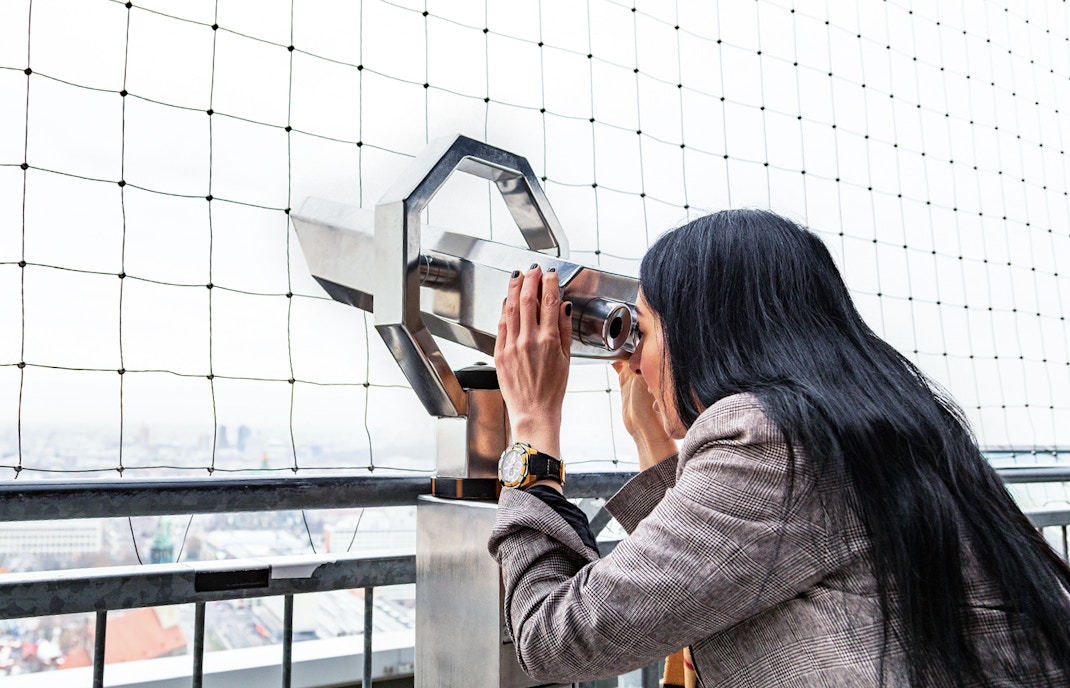
Welcoming the 50 millionth visitor (2011)
Around 4 million people visited in the first three years after its opening, and on 14 June 2011, it welcomed its 50 millionth visitor. This milestone underscores its enduring significance in Berlin TV Tower history as both a cultural and architectural icon.
Berlin TV Tower today
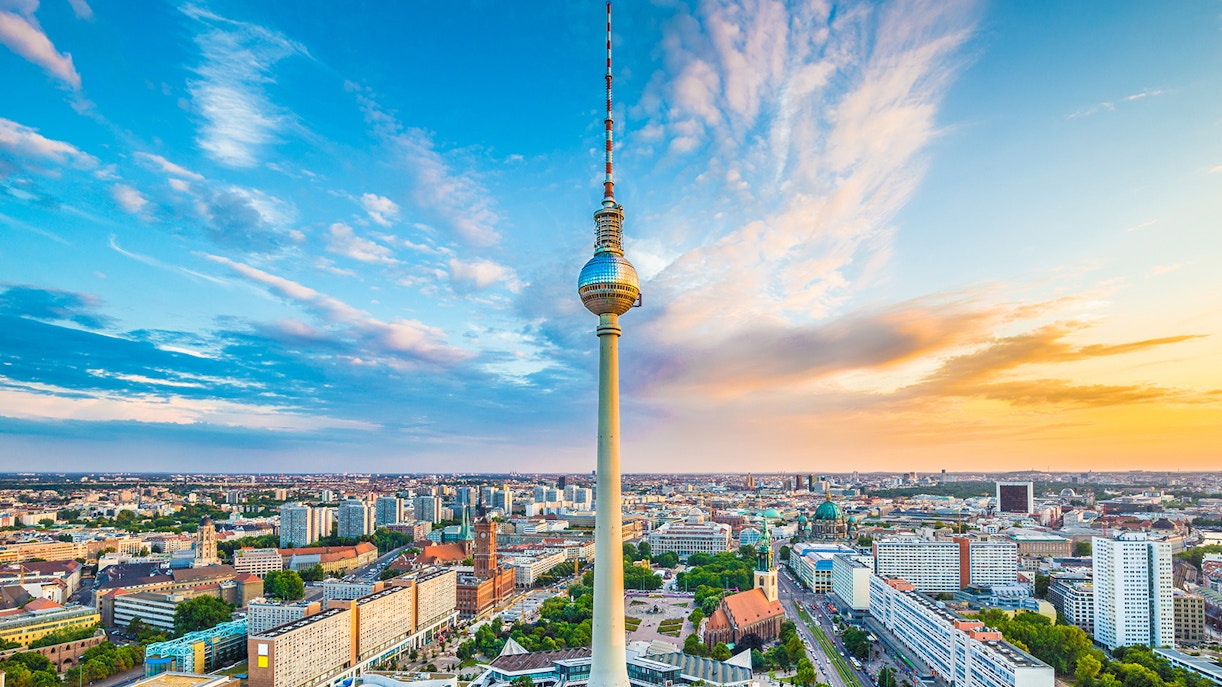
Since its completion and inauguration in 1969, the Berlin TV Tower has continued to operate as a broadcasting facility. As the tallest building in Germany, it has also become one of Berlin’s most popular tourist attractions, offering spectacular bird’s-eye views from its observation deck. Every year, the Berlin TV Tower draws over 1 million visitors from around the world, who come not only to enjoy the panoramic cityscape but also to dine at the Sphere restaurant, the city’s highest dining venue, and experience the immersive virtual reality features that showcase the tower’s construction and history.
In 2025, the restaurant reopened to the public after renovations, unveiling a refreshed interior and menu. Curated by Berlin’s acclaimed two-star Michelin chef Tim Raue, it has transformed from a classic sightseeing spot into the city’s premier fine-dining destination at 207 metres. The interiors blend retro charm with modern elegance, while the revolving space offers 360-degree views of iconic landmarks such as the Brandenburg Gate and Museum Island.
Today, the Berlin TV Tower proudly reflects its history, from its Cold War origins in East Berlin to its role as a symbol of reunification, embodying the city’s storied past and vibrant future.
Frequently asked questions about the Berlin TV Tower's history
Construction of the Berlin TV Tower started in 1965 and was completed in 1969. Renowned East German architect Hermann Henselmann designed it, and it was commissioned by the East German government as both a broadcasting facility and a statement of national ambition.
The tower was a symbol of East German power during the Cold War, towering over West Berlin and the rest of the city. It was primarily built to transmit television and radio signals throughout East Berlin and its surrounding areas. After German reunification in 1990, it transformed into a symbol of a unified Berlin, representing both the city’s turbulent past and its progress.
Since 1990, the tower’s broadcasting equipment has been upgraded to support modern digital technology, while the interiors have been renovated and new VR experiences introduced, making it one of Berlin’s top tourist attractions.
Watch out for the tower’s slender socialist modernist shaft, the iconic sphere that houses the observation deck and restaurant, and the views that reveal Berlin’s mix of historical landmarks and modern development.
One fascinating fact about the Berlin TV Tower is that its construction relied on materials imported from various countries. For example, steel was sourced from West Germany and elevators from Sweden, which drove costs far beyond the original budget and revealed East Germany’s dependence on foreign resources.
The tower was officially inaugurated on 3 October 1969. High-ranking East German officials, including Walter Ulbricht and his wife Lotte, attended the ceremony. The event also launched DFF 2, Germany’s second state television channel, marking the beginning of colour broadcasting.
Construction took just over four years, from August 1965 to October 1969, overcoming budget challenges and logistical issues, including demolishing older buildings to clear the site and importing key components from West Germany.
The sphere atop the Berlin TV Tower serves both functional and symbolic purposes. It houses an observation platform at 203 meters and a rotating restaurant at 207 meters. The design was intended to resemble the Soviet "Sputnik" satellites and was originally planned to glow red, symbolizing socialism, although this lighting scheme was never implemented.
Yes, the Berlin TV Tower has undergone several changes since reunification in 1990. In 1997, the antenna was modernized, raising the height from 365 to 368 meters. New features were also introduced to improve the visitor experience, including a photo booth, premium deluxe tickets, and VR films about Berlin’s history and the TV Tower itself. The most recent update in 2025 refreshed the Sphere restaurant with a new menu by Michelin-starred chef Tim Raue, turning it into a fine-dining destination with 360-degree panoramic views.
The nickname "Pope's Revenge" was given by West Berliners to a sunlit cross that appeared on the Berlin TV Tower. Sunlight reflecting off the tower's stainless-steel sphere created the cross, which was seen as divine retaliation for the East German Communist regime's removal of crosses from East Berlin's churches. Fun fact: the East German government, embarrassed by the unintended symbol of faith in a secular state, reportedly tried to paint over it once!



